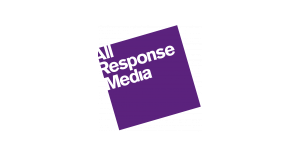Temperatures are increasing, the days are getting longer, as the start of summer is on the horizon – but what does this mean in terms of consumer behaviour, consumer media consumption across channels and more importantly for marketers – media channel budget allocation?
Despite TV being generally, the largest media consumed all year round (in terms of daily minutes per individual), TV does see a decline in impacts over the summer months – June being consistently the lowest month for impacts (11% lower than the yearly average in 2018). Other media such as cinema generally see an increase in impacts over the summer months in line with box office releases and school holidays. On the other hand, radio is one offline media which does remain stable all year round with no months that majorly dip.
It is no secret that effective marketing means being where your customer is, therefore alongside many other variables including product/brand seasonality, media consumption seasonality should be considered when allocating media budgets across channels.
As reported by Addynamix, in 2018 overall offline spend share did shift from TV in the summer months into radio, outdoor and press, demonstrating how the general market spend does shift in line with these consumer media behaviours:
All Response Media viewpoint
The general market spend does shift in line with overall media consumption trends, however, this doesn’t necessarily mean your brand’s channel budget allocation needs to. We can take advantage of shifts in pricing, using different channels to drive performance for clients at different times of the year.
July and August are the 2nd and 3rd cheapest months of the year in terms of TV pricing and cost per thousand impacts (behind January, based on ITV Ratecard), therefore utilising TV over the summer months could be a cost-efficient way to reach your audience and help gain efficient results (providing all other variables including consumer response rate remain stable).
The spike in out-of-home (OOH) spend over the summer months relates to advertisers taking advantage of longer daylight hours and increased footfall on outdoor formats. However, there are many ways of deploying OOH, and tube advertising is an interesting exception to the rule where pricing can be softer with increased tourist footfall in the summer holidays. This can offer advertisers great opportunities to test performance OOH at a cost point that really works.
Radio is a great way of targeting commuter audiences in the winter months, however, in the summer it’s a great way to target home and leisure listeners. Pricing generally fluctuates in line with holidays (Bank holidays and Christmas for example generally being c.15% more), therefore this should be taken into consideration.
These seasonal trends are also reporting on all individuals and there will be some differences when looking at specific target audiences, therefore brands should look at media consumption on an individual basis.
Read more information on our TV services.


